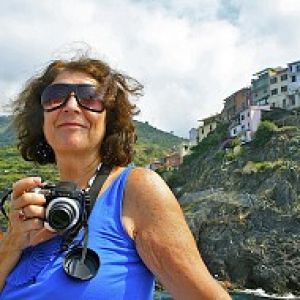The Grand Mosque of Kairouan
At breakfast the hotel had run out of granola and there was no milk. I had a yoghurt and a very good croissant - no doubt due to the French influence. The Chinese woman I saw last night continued with her interest in fusion food by having some green beans with her Danish pastry.
After 4 nights in Tunis we moved on today. It took about 3 hours to reach Kiarouan, Islam’s fourth most holy centre after Mecca, Medina and Jerusalem. The Muslim woman in the group said she went to the first two with her two daughters and it cost around £6000 each to get there and have hotels. Farez our guide said he’d not go to Mecca because he thought the Saudis over-charged
Kairouan was founded in 670CE when Oqba Ibn Nafi, advancing west, called a halt with his army. It was a reasonably secure base being half way between possible coastal invaders and the Berbers from the Atlas Mountains but gets very hot in summer being in the middle of a large plain. Our first stop was at a tower from where we could look down at the Aghlabid Pools which had been put there by the Arab invaders as the area is very dry.
It was raining heavily when we came out so we picked up coats and brollies from the bus before walking to the carpet shop where some bought small Kashmir rugs for £40. We enjoyed the mint tea and sweet little pastry.
Next stop was the Great mosque of Oqba. Farez explained about his religion as some people in the group asked lots of questions such as “are some mosques not holy”, or “is the Muslim religion going down a bit?” He didn’t understand what she meant so gave us a talk about the beliefs and obligations of Islam. He explained a bit about the difference between Sunni and Shia. We covered our heads and were allowed to enter the courtyard which as beautifully framed by Hagsid and Turkish colonnades. The age of the minaret is disputed but the lower storey is 730CE, and makes it the oldest surviving minaret in the world. The roof inside the prayer hall was supported by columns mainly from Roman sites. The call to prayer went on while we were there.
Next we headed in pouring rain through the medina where we stopped at a bakery to watch the process and have a taste. The small alleys in the souk, much admired by Paul Klee, were much prettier than the busy ones of Tunis as the doors, mostly blue, had peeling paint and were in various stages of decay. We were let up some stairs at Bir Barouda. At the top of was a camel attached to a water wheel. By walking round the circle it pulled up water.
Lunch was a trial for the 3 vegetarians as the guide had forgotten to prewarn them.
Everyone had the ubiquitous cabbage salad with chopped cold potatoes, a slice of tomato and some chopped cucumber. The others had a turkey escalope, greasy mixed veg and rice. We got omelette again with greasy potatoes and veg though for some reason Melanie was given a plate of plain spaghetti as well. We then had an orange.
After lunch we went to the Mosque of Sidi Sahab, built in 17th century and is the mausoleum of Abou Zamma el Belaoui who was a companion of the prophet. It is also known as Mosque of the Barbar because it is said he kept 3 hairs of the prophet’s beard - one under his tongue, one on his right arm, and one next to his heart). The entrance leads to a large courtyard, the surrounds of which were decorated with beautiful tiles. We weren’t allowed to enter the tomb room but the doorman suddenly made off with my camera and took pictures then sprinkled me with rose water. A tip was given of course. Locals people come to the mausoleum to make prayers for cures of illness or infertility.
Around 3.30 we were on the bus for the hour drive to Souss where our next enormous monstrosity of a hotel is situated. We can see the sea beyond a rubbish tip.
- 26
- 1

Comments
Sign in or get an account to comment.


